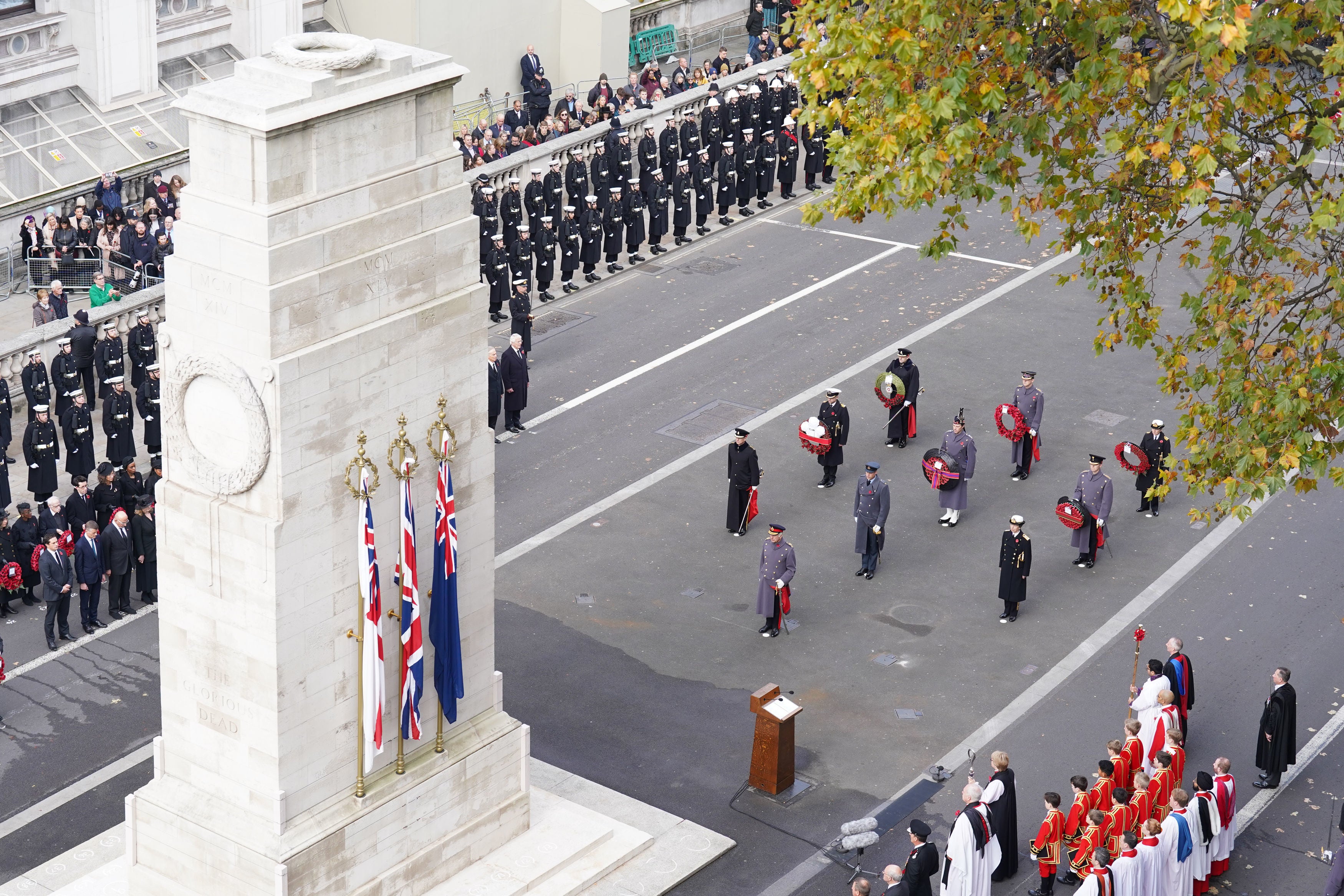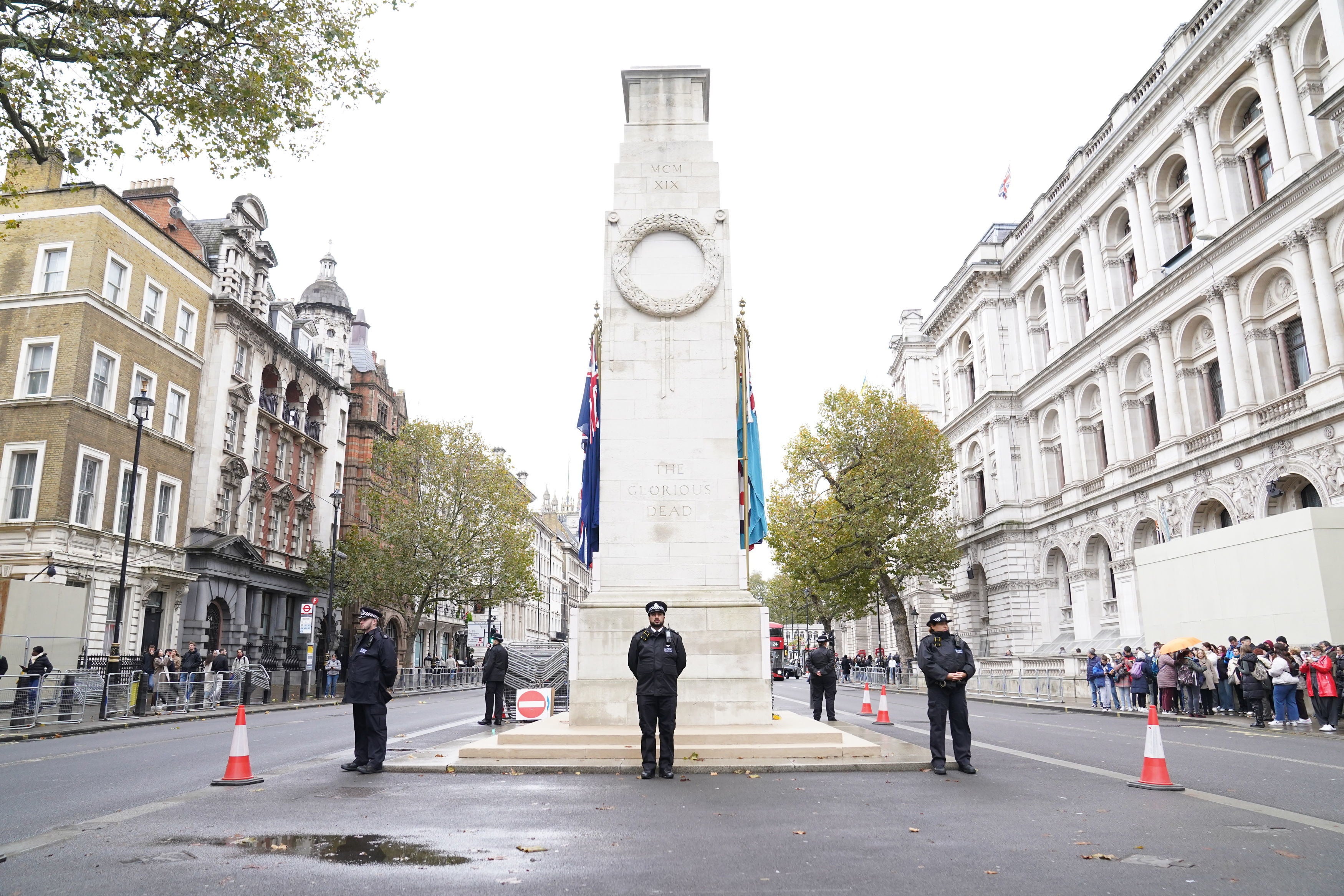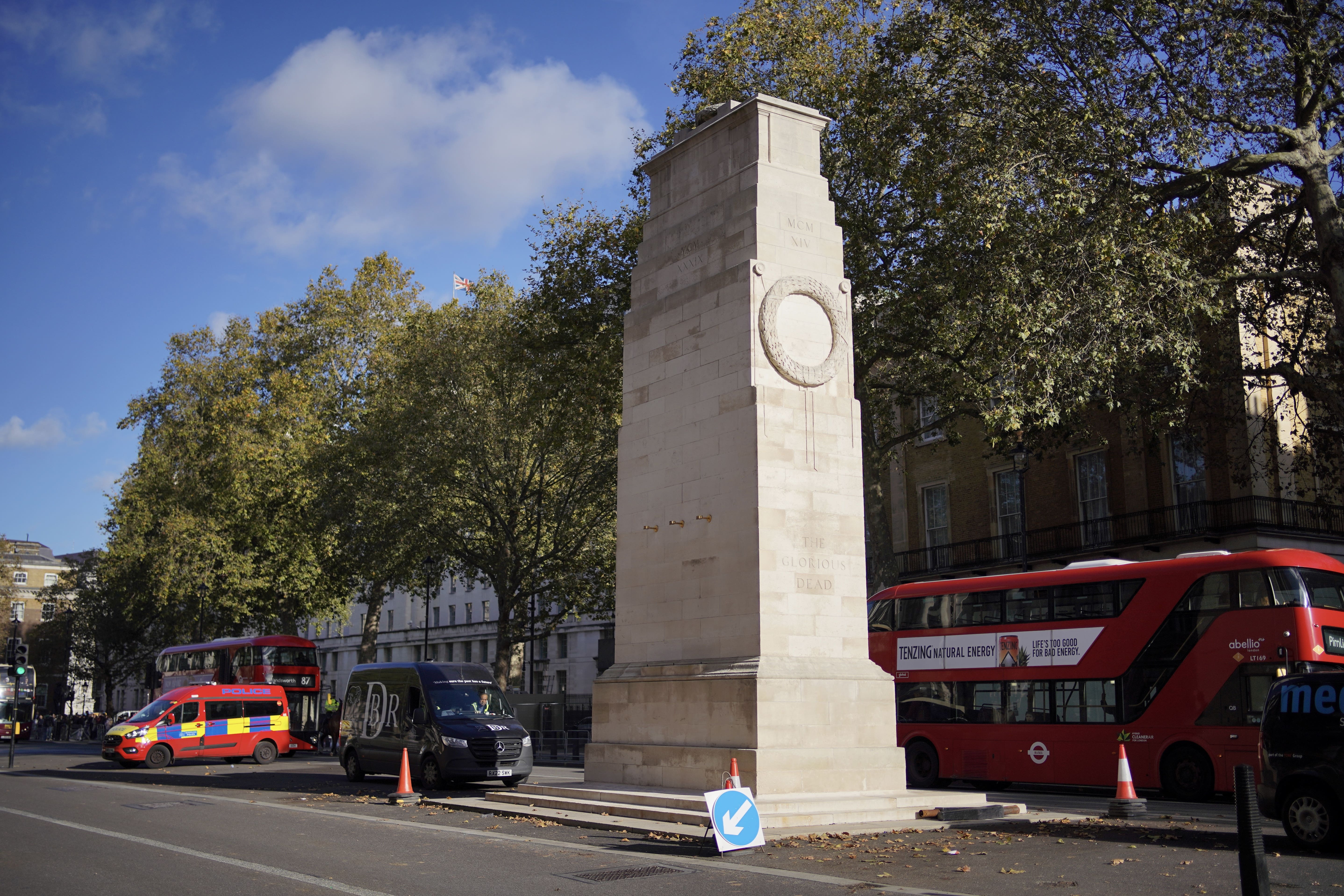Cenotaph: What is the history and significance of the Whitehall monument on Remembrance Day?
War memorial honouring Britain’s fallen soldiers designed by Sir Edward Lutyens in 1920 and has stood as centrepiece of National Service of Remembrance ever since

Your support helps us to tell the story
From reproductive rights to climate change to Big Tech, The Independent is on the ground when the story is developing. Whether it's investigating the financials of Elon Musk's pro-Trump PAC or producing our latest documentary, 'The A Word', which shines a light on the American women fighting for reproductive rights, we know how important it is to parse out the facts from the messaging.
At such a critical moment in US history, we need reporters on the ground. Your donation allows us to keep sending journalists to speak to both sides of the story.
The Independent is trusted by Americans across the entire political spectrum. And unlike many other quality news outlets, we choose not to lock Americans out of our reporting and analysis with paywalls. We believe quality journalism should be available to everyone, paid for by those who can afford it.
Your support makes all the difference.Remembrance Sunday takes place on the second Sunday of November every year and provides a moment for the British public to reflect on the supreme sacrifice made by its soldiers in the First World War and in all conflicts since.
The centrepiece of the National Service of Remembrance is the Cenotaph, the stone war memorial that stands in the heart of Whitehall in central London, at the base of which members of the royal family, the prime minister, the leader of the opposition, their ministers, Commonwealth high commissioners and military personnel all gather to lay wreaths of poppies and pay their respects to the fallen.
The monument takes its name from the Greek word for “empty tomb” and reflects the absence of the dead, many of whom were buried close to the battlefields of France and Flanders where they were killed in the Great War of 1914-18 because the repatriation of dead bodies was forbidden at the time, a policy that meant their grief-stricken loved ones had no local gravesite at which to mourn their loss.

The Cenotaph was designed by the famed Edwardian architect Sir Edward Lutyens, then an adviser to the newly-founded Imperial War Graves Commission.
Lutyens had originally been tasked with erecting a temporary, wood-and-plaster memorial for the belated Victory Parade that was held on 19 July 1919 to honour the signing of the Treaty of Versailles.
When huge crowds gathered to watch that 15,000-strong procession of Allied soldiers and returned on 11 November to lay their tributes on the one-year anniversary of the signing of the armistice, it was decided a permanent successor was needed, given its obviously immense popularity with the British public.
Construction of Sir Edward’s design for a more lasting version of the Cenotaph commenced in May 1920, the monument this time built from Portland stone and intended as a simple pedestal supporting a lone coffin, standing solemnly for all of the nation’s “Glorious Dead”, with no overt reference to events on the battlefield and only a laurel wreath by way of decoration.
His design received some criticism from Christian groups over its lack of explicit Christian symbolism – a decision that came at the direction of prime minister David Lloyd George, on the basis that the Cenotaph was for people “from all parts of the empire, irrespective of their religious creeds” – but its secular nature has arguably proved to be a strength, the memorial encouraging quiet contemplation no matter what the faith of the observer.
It was duly unveiled by King George V and the Archbishop of Canterbury on 11 November 1920 on the same day that the burial service for the “Unknown Warrior” was held at nearby Westminster Abbey, the second anniversary of the armistice.

The Cenotaph was shrouded in Union Jacks that day before the king pulled them free at the exact stroke of 11am, the preise moment the ceasefire had come into effect two years earlier. A two-minute silence was then observed, ending with the “Last Post” ringing out across Whitehall.
The memorial was met with instant acclaim from the public, who so admired it that men customarily tipped their hats to it in tribute when they passed, prompting replicas to spring up in towns and cities across the country.
The Royal Institute of British Architects duly rewarded Lutyens with its Royal Gold Medal in 1921 in gratitude for his work.
Sadly, “the war to end all wars” could not live up to its promise and, following the conclusion of a once-unthinkable Second World War in 1945, King George VI oversaw the rededication of the Cenotaph to recognise the British and imperial dead of that conflict too, its dates added to the inscription in Roman numerals and presented at a ceremony on 10 November 1946.
The Cenotaph has occasionally been defaced by protesters in the intervening decades but still stands tall 103 years on from its unveiling, the simple humanity of its message there for all to see.



Join our commenting forum
Join thought-provoking conversations, follow other Independent readers and see their replies
Comments